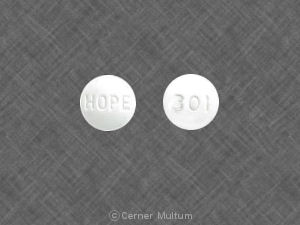Scopolamine Side Effects
Medically reviewed by Drugs.com. Last updated on Feb 3, 2024.
Applies to scopolamine: transdermal patch extended release.
Serious side effects of Scopolamine
Along with its needed effects, scopolamine may cause some unwanted effects. Although not all of these side effects may occur, if they do occur they may need medical attention.
Check with your doctor immediately if any of the following side effects occur while taking scopolamine:
More common
- Agitation
Less common
- Bigger, dilated, or enlarged pupils (black part of the eye)
- blurred vision or other changes in vision
- confusion
- increased sensitivity of the eyes to light
Incidence not known
- Burning feeling while urinating
- delusions of persecution, mistrust, suspiciousness, or combativeness
- difficulty in speaking
- disturbance in attention
- dry, itchy eyes
- eyelid irritation
- headache
- loss of memory
- poor coordination
- problems with memory
- restlessness
- seeing, hearing, or feeling things that are not there
Get emergency help immediately if any of the following symptoms of overdose occur while taking scopolamine:
Symptoms of overdose
- Anxiety
- blurred or loss of vision
- change in consciousness
- decrease in frequency of urination
- decrease in urine volume
- deep or fast breathing with dizziness
- difficulty in passing urine (dribbling)
- disturbed color perception
- double vision
- dry mouth
- dry, flushed skin
- fast, pounding, or irregular heartbeat or pulse
- halos around lights
- headache
- irritability
- loss of consciousness
- nervousness
- night blindness
- numbness of the feet, hands, and around the mouth
- overbright appearance of lights
- painful urination
- pounding in the ears
- seizures
- shaking
- sleepiness
- trouble with sleeping
- tunnel vision
- unusual drowsiness, dullness, tiredness, weakness, or feeling of sluggishness
Other side effects of Scopolamine
Some side effects of scopolamine may occur that usually do not need medical attention. These side effects may go away during treatment as your body adjusts to the medicine. Also, your health care professional may be able to tell you about ways to prevent or reduce some of these side effects.
Check with your health care professional if any of the following side effects continue or are bothersome or if you have any questions about them:
More common
- Dizziness
- dry mouth
- sleepiness or unusual drowsiness
Less common
- Body aches or pain
- congestion
- cough
- dryness or soreness of the throat
- fever
- hoarseness
- runny nose
- tender, swollen glands in the neck
- trouble in swallowing
- voice changes
More common
- Burning feeling at the application site
- feeling of constant movement of self or surroundings
- itching, skin rash
- lightheadedness
- sensation of spinning
For Healthcare Professionals
Applies to scopolamine: compounding powder, injectable solution, oral tablet, transdermal film extended release.
General
The most commonly reported side effects included dry mouth, dizziness, and somnolence.[Ref]
Gastrointestinal
Very common (10% or more): Dry mouth (up to 66.7%)
Rare (0.01% to 0.1%): Nausea, vomiting
Frequency not reported: Constipation, gastrointestinal disorders, mild to moderate gastrointestinal tract symptoms, swallowing difficulty[Ref]
Nervous system
Very common (10% or more): Dizziness (up to 16.7%)
Common (1% to 10%): Drowsiness, sedation, somnolence
Uncommon (0.1% to 1%): Central nervous system simulation
Rare (0.01% to 0.1%): Attention disturbance, balance disturbances, headache, increased seizure frequency, memory impairment
Frequency not reported: Anticholinergic effects, coma, dystonia, eclamptic seizures, loss of consciousness, neuroleptic malignant syndrome
Postmarketing reports: Coordination abnormalities, speech disorder, vertigo[Ref]
Increased seizure frequency occurred in patients with epilepsy.
Eclamptic seizures occurred in pregnant patients.[Ref]
Psychiatric
Common (1% to 10%): Agitation, confusion
Uncommon (0.1% to 1%): Hallucinations, restlessness
Rare (0.01% to 0.1%): Disorientation, visual hallucinations
Frequency not reported: Delirium, mental confusion, mental excitement, neuropsychiatric adverse reactions, psychiatric disorders, psychotic disorder
Postmarketing reports: Acute psychosis, paranoia[Ref]
Ocular
Common (1% to 10%): Accommodation disorder, blurred vision, cycloplegia, eyelid irritation, mydriasis/unilateral mydriasis, myopia, pupil dilation, visual accommodation disorder, visual impairment
Very rare (less than 0.01%): Acute glaucoma precipitation, closed angle glaucoma, narrow angle glaucoma
Frequency not reported: Acute angle closure glaucoma, angle closure glaucoma, increased intraocular pressure, loss of accommodation, periorbital swelling, photophobia
Postmarketing reports: Amblyopia, dry eyes, eye pruritus[Ref]
Dermatologic
Common (1% to 10%): Skin irritation
Uncommon (0.1% to 1%): Abnormal sweating, pruritus, skin reactions, urticaria
Very rare (less than 0.01%): Generalized rash
Frequency not reported: Decreased sweating, dyshidrosis, dry skin, erythema, mild to moderate skin reactions, rash[Ref]
Cardiovascular
Common (1% to 10%): Tachycardia
Frequency not reported: Arrhythmias, cardiorespiratory distress, decreased blood pressure, edema, flushing, mild to moderate cardiovascular system symptoms, palpitations, transient bradycardia[Ref]
Respiratory
Common (1% to 10%): Pharyngitis
Frequency not reported: Asthma syndrome, dyspnea, mild to moderate respiratory tract reactions, reduced bronchial secretions[Ref]
Genitourinary
Rare (0.01% to 0.1%): Urinary retention
Frequency not reported: Impaired micturition, micturition difficulty, urinary disorders, urinary disturbances, urinary emergency
Postmarketing reports: Dysuria[Ref]
Hypersensitivity
Frequency not reported: Allergic reaction, anaphylactic reactions, anaphylactic shock/fatal anaphylactic shock, anaphylactoid reactions, hypersensitivity reactions with respective clinical/laboratory manifestations, other hypersensitivity[Ref]
Other
Frequency not reported: Drug withdrawal symptoms/post-removal symptoms, hyperthermia at high temperatures (decreased sweating), idiosyncratic reactions[Ref]
Local
Frequency not reported: Injection site pain, MRI skin burns/application site burning (patch)[Ref]
Immunologic
Frequency not reported: Facial swelling[Ref]
Metabolic
Frequency not reported: Thirst[Ref]
More about scopolamine
- Check interactions
- Compare alternatives
- Pricing & coupons
- Reviews (207)
- Dosage information
- During pregnancy
- Drug class: anticholinergic antiemetics
- Breastfeeding
- En español
Patient resources
- Scopolamine transdermal drug information
- Scopolamine (Advanced Reading)
- Hyoscine Injection
- Scopolamine Transdermal Patch
Other brands
Professional resources
Other brands
Related treatment guides
References
1. Cerner Multum, Inc. UK Summary of Product Characteristics.
2. Cerner Multum, Inc. Australian Product Information.
3. Product Information. Transderm-Scop (scopolamine). Sandoz Inc. 2022.
4. Product Information. Scopolamine (scopolamine). Perrigo, L. Company. PROD.
Further information
Always consult your healthcare provider to ensure the information displayed on this page applies to your personal circumstances.
Some side effects may not be reported. You may report them to the FDA.

